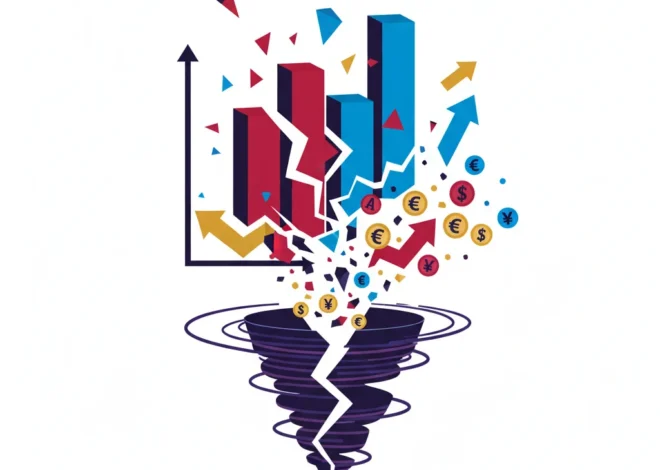
Beyond the Polls: Are Prediction Markets a Threat to Democracy?
In the relentless 24-hour news cycle that defines modern politics, we are inundated with data. Polls, expert analyses, and voter sentiment trackers all attempt to answer a single, tantalizing question: What happens next? For decades, we’ve relied on these traditional tools to forecast election outcomes. But a new and powerful force, born from the worlds of finance and financial technology, is rapidly gaining prominence: the prediction market.
On the surface, these platforms represent a fascinating application of market principles. They operate like a stock market for events, allowing users to buy and sell “shares” in the outcome of everything from presidential elections to Supreme Court decisions. Proponents argue they harness the “wisdom of the crowds” to create forecasts far more accurate than any single pollster. However, a darker possibility is emerging, one that poses a fundamental threat to the integrity of our democratic process. As a recent analysis in the Financial Times highlights, these markets may not just be predicting the future—they could be creating a troubling opportunity to manipulate it.
The Allure of the “Information Market”
To understand the risk, we must first appreciate the appeal. The core idea behind prediction markets is rooted in a cornerstone of economics: the efficient-market hypothesis. This theory posits that asset prices reflect all available information. In a prediction market, the “asset” is a potential outcome, and its “price” is the market-perceived probability of it occurring.
For example, if a contract for “Candidate X to win the election” is trading at $0.60, the market is signaling a 60% probability of that outcome. This price isn’t set by an expert; it’s the equilibrium point reached by thousands of participants, each bringing their own data, insights, and biases to the table. This decentralized approach to forecasting has shown remarkable success in various fields, from corporate sales predictions to academic research.
These platforms, often powered by cutting-edge fintech and blockchain technology, promise a purer, more dynamic form of insight than traditional methods. Unlike a static poll taken over a few days, a prediction market is a live, 24/7 barometer of public expectation, reacting instantly to news and events. This real-time feedback loop is incredibly valuable for investors, journalists, and campaign strategists alike.
The Authenticity Premium: Why the Market's 'Vibe Shift' Is Your Next Big Investment Signal
From Forecasting Tool to Weapon of Influence
The core danger lies in a subtle but profound shift in purpose: from passive prediction to active manipulation. The very mechanism that makes these markets efficient can also be their Achilles’ heel. A well-capitalized actor—be it a billionaire, a corporation, or even a foreign state—could potentially weaponize a prediction market to shape public perception.
How would this work? Imagine a bad actor wants to create the impression that an underdog candidate is gaining momentum. They could pour millions of dollars into buying “shares” for that candidate to win, artificially driving up the price. A contract trading at $0.20 (20% chance) could be pushed to $0.40 (40% chance). This isn’t done with the expectation of a financial return; in fact, the manipulator may be fully prepared to lose their entire stake. The real prize isn’t profit—it’s narrative control.
This manufactured momentum can then trigger a dangerous feedback loop:
- Media Amplification: Journalists and news outlets, always eager for a new angle, report on the “surging odds” in the prediction markets, presenting it as hard data.
- Bandwagon Effect: Undecided voters, seeing this apparent surge in viability, may be more inclined to support the candidate.
- Donor Confidence: Potential donors may see the rising odds as a sign of a winning campaign, unlocking crucial funding.
- Voter Turnout: Perceptions of a close race or a likely winner can directly impact who decides to show up on election day.
Suddenly, a manufactured market signal has created a real-world political effect. As the FT article grimly notes, this transforms a forecasting tool into “a new way to buy influence.” This isn’t just a theoretical risk. With the rise of high-volume, crypto-based platforms, the barrier to entry for such manipulation is lower than ever, and the transactions can be harder to trace than traditional campaign donations.
To better understand the differences, let’s compare these new tools with traditional polling.
| Feature | Traditional Polling | Prediction Markets |
|---|---|---|
| Mechanism | Surveys a representative sample of the population at a specific point in time. | Aggregates the financial bets of a global, self-selected group of participants in real-time. |
| Key Strength | Based on established statistical methodologies designed to reflect the broader population. | Dynamic, continuous, and financially incentivizes participants to be accurate. |
| Key Weakness | Can be static, suffer from response bias, and lag behind fast-moving events. | Participant pool may not be representative; can be influenced by “herd mentality.” |
| Vulnerability to Manipulation | Low to moderate (e.g., “push polling,” methodological bias). | High; susceptible to financial manipulation by wealthy actors aiming to influence the price (narrative) rather than make a profit. (source) |
The Widening Gulf: Why the Fed Sees Wealth Inequality as the Next Big Threat to the US Economy
The Wild West of Regulation
This emerging threat exists in a precarious regulatory gray area. In the United States, the Commodity Futures Trading Commission (CFTC) has historically been wary of allowing election-based contracts, often viewing them as a form of gambling rather than legitimate trading or hedging. For years, the agency has prevented regulated exchanges from offering political outcome futures, effectively keeping the practice on the fringes of the mainstream finance and banking sectors.
However, the explosion of decentralized finance (DeFi) and blockchain-based platforms has rendered much of this oversight moot. Many of the largest prediction markets operate offshore or on decentralized networks, making them incredibly difficult for any single national regulator to control. This creates a global, largely unregulated casino for political events, where the rules are unclear and the potential for manipulation is high. According to some reports, these platforms are already handling hundreds of millions of dollars in volume on major political events (source), a number that is only expected to grow.
The challenge for regulators is immense. How do you draw the line between a legitimate financial instrument for hedging political risk and an illegal gambling operation? More importantly, how do you police a market designed to be borderless and censorship-resistant? The very features that make financial technology so innovative also make it a potent vehicle for activities that could undermine democratic norms.
The Great Auto-Shift: Why a Shipping CEO's Warning Spells a New Era for Global Markets
Navigating the Future: A Call for Critical Awareness
Prediction markets are not inherently evil. The technology behind them holds genuine promise for improving forecasting and aggregating information in a way that can benefit our economy and society. However, we cannot afford to be naive about their potential for misuse. As these tools move from niche corners of the internet to the mainstream of political discourse, a new level of digital and financial literacy is required.
So, what can be done? For different stakeholders, the path forward requires a new mindset:
- For Investors & Finance Professionals: Treat prediction market data as a valuable but volatile signal. Understand that it reflects not just probability but also market liquidity and potential manipulation. Use it as one tool among many, not as an infallible oracle.
- For Business Leaders: Be aware that markets can be created for nearly any event, including those that could impact your company (e.g., “Will the FDA approve this drug?”). Monitor these signals, but be prepared for them to be targeted by those seeking to influence your stock price or corporate reputation.
- For the Public and the Media: We must learn to report on and consume this data with extreme caution. A “40% chance” in a prediction market is not the same as 40% of voters in a poll. Media outlets have a responsibility to explain the context, the source of the data, and its vulnerability to manipulation every time they cite it.
The spectre looming over democracy is not the technology itself, but our collective failure to understand its implications. Prediction markets are a powerful new force at the intersection of investing, information, and influence. As we head into more contentious political cycles, the question is no longer whether these markets can predict the future, but whether we will allow them to dictate it.


